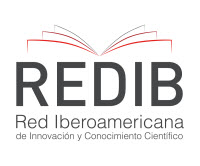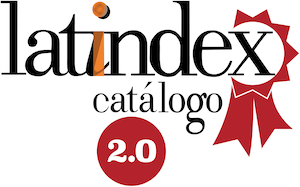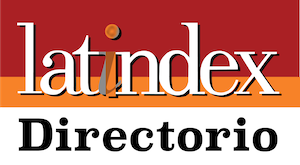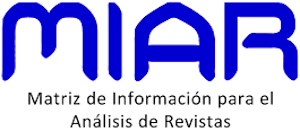Normative for the approval of articles
SATHIRI SEMBRADOR: NORMATIVE
PROCEDURE FOR THE APPROVAL OF PLEADINGS
The articles proposed for publication in the journal Sathiri of the Universidad Politécnica Estatal del Carchi (UPEC) will be approved under the following regulations:
Initial review
The proposed articles will have a first review phase in which it will be determined whether they meet the following characteristics:
• It is in the format established by the journal.
• Presents all formal requirements.
• Attached the office of delivery.
• Applies APA citation regulations (7th ed.).
• Its wording is clear.
If the article does not comply with any of these conditions, it will be returned to the author or authors to make the necessary corrections and resubmit it. On the contrary, if the article meets these conditions, it enters the application process. In this case, the author or authors will be notified indicating that their article has been favourably received.
Deadline for this phase: from the moment of receipt of the article until a response of the Initial Review is delivered, a maximum of 2 days may elapse.
Accumulated time from receipt of the article: 2 days.
Antiplagium measurement
After it has been accepted for its application, the article will be reviewed through the antiplagium program that the UPEC has. The document will be able to obtain up to 12% of information matching other sources. If you exceed this tolerance percentage, the author or authors will be returned to make the necessary corrections and begin the process again. If the result of the antiplagium program does not exceed this tolerance limit, the article continues its process.
Period of this phase: from the moment the article was accepted until the unfavourable result of the antiplagium program is delivered, a maximum of 2 days may elapse. Accumulated time from receipt of the article: 2 days.
Academic peer review
After being submitted to the antiplagium program and obtaining the tolerated percentage, two peer reviewers related to the topic of the article are designated to issue a critical opinion.
The two peer reviewers appointed will be part of the database consolidated by the UPEC for these purposes. Both will have a fourth level degree, with a master’s degree or, preferably, a doctorate.
The evaluation of the two pairs will be carried out under the double-blind modality, also known as "double-blind peer review". Neither the author or authors of the article will have knowledge of the identity of the two evaluators, nor will they have knowledge of the identity of the author or authors. The magazine will carry out the entire mediation process between the two parties.
The two nominated peer reviewers will evaluate the article according to a data sheet designed by the UPEC for that purpose. The fact sheet will analyse five variables: relevance, structure, content, wording and format. The results that can be obtained are as follows:
• Publicable (Rating of 5). The author or authors should not make any changes. The article continues its process.
• It can be published after correcting the aforementioned modifications (Rating from 3.5 to 4.99). The author will be given the observations of the peer reviewers to proceed with the corrections. After having made them, the article continues its process.
• Publishable with a new rating (Rating from 2.12 to 3.49). It will proceed as in the previous literal, but the writing must again be sent to the validator to verify the corrections made.
• Not publishable (Rating less than 2.11). In case the two peer reviewers determine that the article is not publishable, the author or authors will be notified that their article has been rejected. But, if one of the evaluators determines that the article is not publicable and the other determines that it is (either with corrections or with new valuation), in this case the article will be given to a third peer reviewer to assess the article under the same parameters. If this third reviewer determines that the article is not publishable, the author will be notified that the process has been completed. But if you determine that the article is publishable you will proceed according to the other options.
See the evaluation data sheet here
Deadline for this phase: From the moment the article was accepted until the peer reviewers are appointed, up to 10 days may elapse. Up to 14 days may elapse from the time the peer reviewers are appointed until the time they submit their evaluation reports. From the moment the author or authors are notified of the evaluation until they deliver the requested corrections, it can take up to 5 days. From the moment the author or authors submit the corrections until the peer reviewers corroborate the changes, it can take up to 5 days.
Accumulated time from receipt of the article: 36 days.
Foreign language correction
After the article has passed all the stages of evaluation of academic peers, it will be submitted to a professional review of those components written in foreign language, especially with regard to the abstract. A professional in English or foreign languages will certify in writing that the passages of the article written in a language other than Spanish are perfectly written. If any correction is necessary, the professional will apply them directly on the text, unless the correction requires prior consultations with the author or authors.
Period of this phase: from the moment that the peer reviewers approve the article until the delivery of the foreign language certification can take up to 4 days.
Accumulated time from receipt of the article: 40 days.
Style correction
After the article has been reviewed in the use of foreign languages, it will be subjected to a thorough review by a grammar specialist. He will correct all details regarding spelling, syntax, punctuation, style, citation policy and presentation. If any correction is necessary, the professional will apply them directly on the text, unless the correction requires prior consultations with the author or authors.
See here the certificate of style correction
Term of this phase: from the moment the article is certified in foreign language until the style review can pass 4 days.
Cumulative time since receipt of the article: 44 days.
Review of the Academic and Scientific Production and Dissemination Unit
After the article has passed the style correction phase, a report will be delivered to the Academic and Scientific Production and Dissemination Unit where all the articles that are already ready to be published in the next issue of the journal will be related. The Academic and Scientific Production and Dissemination Unit , in regular session, will analyze the articles and the process to which they have been submitted to ensure their quality. If necessary, the Academic and Scientific Production and Dissemination Unit, on the basis of academic criteria, may make adjustments or changes to an article, or may also request detailed information on one of the stages of evaluation of any article.
Deadline for this phase: one month before the publication of the journal.
Accumulated time from receipt of the article: one month and 44 days.
Review of the Editorial Board
After the articles have been approved by the Academic and Scientific Production and Dissemination Unit, they will be handed over to the members of the Editorial Board, who, in a regular meeting, will review them. If necessary, the Editorial Board, based on academic criteria, may make adjustments or changes to any article, or may also request detailed information on any of the phases of evaluation of any article. Articles that are approved here will be published.
Deadline for this phase: two weeks before the publication of the journal.
Design
The articles will be designed according to the graphic guidelines established in the editorial line of the journal. These graphic guidelines will obey the corporate design manuals implemented by the UPEC.
Deadline for this phase: two weeks before the magazine begins to circulate.
Legalization
After the articles have been diagrammed, the process for the allocation of their DOIS will be carried out
Deadline for this phase: it will take place one week before the magazine begins to circulate.
Dissemination of writings
Once the entire process is completed, the articles can be viewed by the OJS System (Digital Magazines) and will be disseminated by the different electronic channels that the UPEC has.
Term of this phase: it will begin to be realized as soon as the magazine enters in circulation.
Writing withdrawal
If the request for withdrawal of the writing is submitted before publication, it will be sufficient for the author or authors to send a signed letter explaining their reasons. In this case, the editor will proceed to withdraw the writing from the process.
If the request for the withdrawal of the writing is presented after the publication, the author or authors will have to present an official document justifying their decision; this communiqué will be sent to the Editorial Board for their respective analysis and the decision taken will be communicated to the sender.
In no case will the journal give the author or authors validation documents generated during the publication process.
FINAL PROVISIONS
The decisions issued by the validators, the Editorial Board, the Editorial Committee and the Academic and Scientific Production and Dissemination Unit of the Revista SATHIRI are not subject to appeal.
As a policy of the journal, no author can publish in two consecutive issues, despite having passed the corresponding filters. In this case, the article may be taken into account in the subsequent publication.
Publication of the approved papers will be free of charge.
The articles published will be supervised and regulated under the UPEC Code of Ethics in aspects relevant to academic ethics.
See here the UPEC Code of Ethics
What is not provided for in these regulations will be decided by the director of the magazine.




















